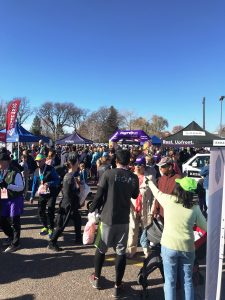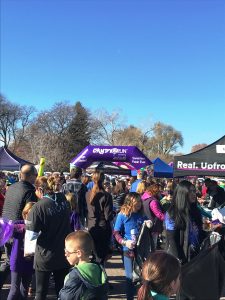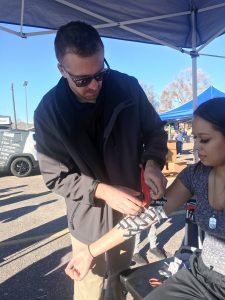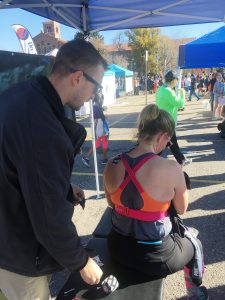By Dr. Joseph Vear
Blog
Cherry Creek Chiropractic, Cherry Creek Chiropractor, Chiropractic Denver, Chiropractor Denver, Denver Chiropractic, Denver Chiropractor, Glendale Chiropactor, Glendale Chiropractic, Sports Chiropractic, True Form, True Form Chiropractic Ankle Mobility
Hey Everyone it your Denver Chiropractor, when it comes to training perhaps one of the most overlooked joints is the ankle. Your ankle is extremely important for optimal function of many of your lifts in the gym such as a squat, lunge, box jump, split jerk…ect and therefore needs to be assessed for proper function. The ankle is your primary shock absorber of the body, it helps dissipate ground reactions forces while walking, running and jumping. Therefore, needs to have proper mobility, stability and strength to relieve ground reaction forces (that when your ankle is not functioning properly could transmit excessive force to the knee, hip and lower back). In the next few examples I will demonstrate some basic exam procedures you can use to determine whether you have proper mobility of the ankle. As the case with most all joints proper mobility needs to be achieved to have optimal stability.
1. Active Dorsiflexion of the Ankle
a. One way to test this is by laying against a wall with your feet flat against the wall and to actively dorsiflex the ankle. The goal hear is to achieve 1 inch or greater clearance from the wall with the ball of your foot. An easy way to measure this is ability to move your opposite foot underneath your dorsiflexed ankle, demonstrated in the video.
2. Active Plantarflexion of the Ankle
a. Lying on your back, legs extended, plantar flex your toes (point your toes) forward, an ability to line up the top of your foot with your shin bone would indicated optimal plantar flexion, again shown in the video.
3. Passive Dorsiflexion of the Ankle in a Weighted Position
a. Standing with one leg forward, place your toes about 4 inches from the wall. In this position, lean forward and try and touch your knee to the wall. While doing, this make sure that you do not hyperextend in your lumbar spine, your knee does not deviate inward and remains in line between your second and third toes. Your heel during this test should also remain firm on the floor without any liftoff. It is also important to note that while doing this test make sure your hips do not deviate side to side (most commonly to the testing leg), this is a common compensation that is seen to improve results but places the knee in an unstable position. If you can achieve the above with no compensations 4 inches or more from the wall you. This demonstration will be shown below.
Hip Mobility
Like the ankle proper hip mobility must be achieved before optimal stability can be achieved. Unlike the ankle your hip is a ball and socket joint and therefore can perform circumduction or move in a circular pattern and movement in 3 planes of motion (frontal or sagittal plane, horizontal plane and transverse plane). Your hip has 6 primary motions. (internal, external rotation, flexion, extension and abduction and adduction). You hip is a very mobile joint and therefore can be complex in nature, however when doing exercises like a squat, snatch, clean, deadlift…ect there are movements that are particularly important (not that all are not important) but in the case of a squat it is pivotal to have proper mobility of the hip in flexion and external rotation. Listed below are some examples of how to improve hip flexion, extension and external rotation on your own.
1. Hip Opener Utilizing a Band
a. This exercises can be utilized to help open the hip joint capsule and improve hip mobility in all planes of motion utilizing small variations in the exercise. The video below will this video I will demonstrate flexion, extension and internal rotation.
2. Ball Smash for Hip External Rotators
a. This exercise can be utilized to help break up hip adhesions, contractures or spasms in the posterior hip muscles. By doing this you can achieve more hip external rotation, therefore allowing you to keep your hips in proper position during your squat and releasing excessive stress or tightness that may develop after a glute heavy exercise. Instructions for this exercise will be explained in the video.
3. Posterior Oblique Sling Activation
a. This exercises is great for helping activate the posterior chain and help stabilize the lumbopelvic hip complex while performing a squat. This is a common fault that occurs when performing a squat and if corrected properly will take excessive shearing forces off your lumbar spine. This video is demonstrated below.
Thanks for reading, your Denver Chiropractor Dr. Joseph Vear out!!!









